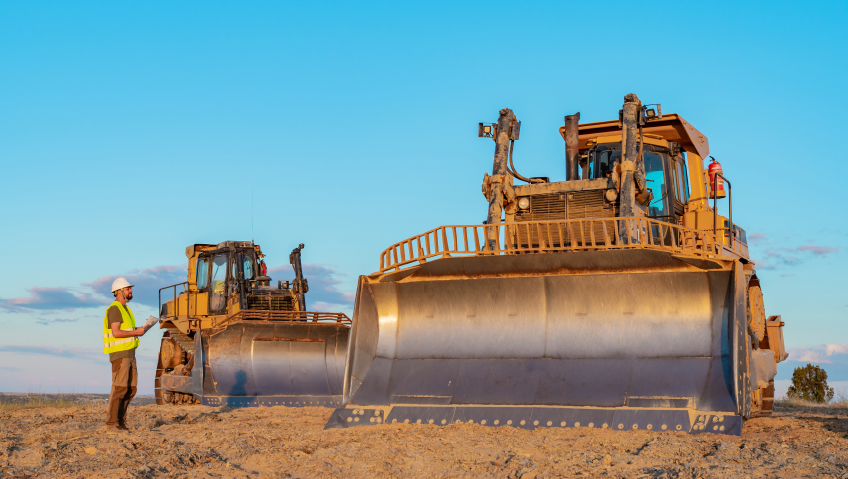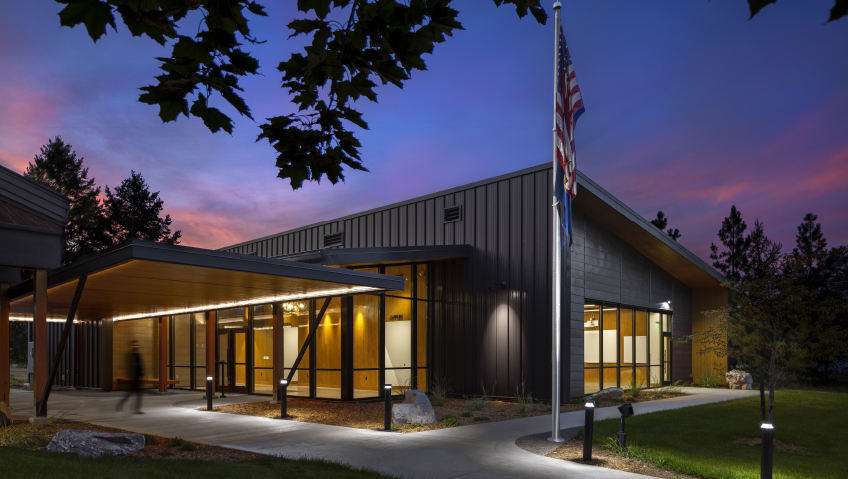From reduced startup costs to saving on storage, insurance, and maintenance, there are plenty of advantages to renting rather than owning construction equipment.
For many of us, our infatuation with construction machines can be lifelong. From kid shows such as the animated Bob the Builder and Mighty Machines to adult fare like Extreme Engineering and Megastructures, our love of massive cranes, bulldozers, skid steer loaders, and other equipment never really goes away. Seeing construction sites and the building process, we marvel at the machines in action, although rarely question how they got there.
For household projects like demolishing a shed, replacing a deck, or tiling a kitchen floor, it’s a given to easily and conveniently rent a reciprocating saw, circular saw, or tile cutter from big box stores like Home Depot, Rona, or local independents. But at the other end of the market the rental scene is similarly booming, with more retailers renting much larger machinery, including skid steers, scissor lifts, and telehandlers.
And unlike the rental of a drill or pressure washer for a weekend, the rental of bulldozers and other large pieces of equipment requires special skills, insurance coverage, and maintenance, and costs hundreds of dollars per day (although long-term rentals often have discounts of 10 to 20 percent per day). For large-scale works like multi-story condominiums, bridges, and entire communities, heavy equipment leases can last for months and even years.
Rise of rentals
Starting around 1870, the Second Industrial Revolution ran until 1914. In less than 50 years, the world welcomed inventions that changed our daily lives, such as the telephone, lightbulb, and aircraft.
Rail and road construction sped up, as did the need for heavy machinery to keep up with demand. This saw the development of construction machinery still in use today, such as the ‘caterpillar’ tractor. Powered by gas instead of steam, the tractor was the brainchild of Benjamin Holt. The holder of 45 patents, Holt remains best known for putting tracks instead of just wheels on tractors, which gave traction and prevented them from sinking into soft soil.
The years to come saw the introduction of new machinery and refinements on existing equipment, and the emergence of a new market: rentals for everything from farming equipment to construction machinery.
The early days of The Great Depression saw informal rentals, such as someone needing a truck for a day or two for a few dollars. Unstructured at the beginning, this soon grew into numerous mom-and-pop businesses in the 1940s with set rental rates for everything from floor sanders to tractors. By the 1950s, the market boomed to thousands of equipment rental locations across the United States. This coincided with the increase in suburban housing developments and the rise of do-it-yourself handymen and women.
Today, bulldozers, backhoes, excavators, and more are lighter, easier, and safer to operate, and release fewer pollutants. However, heavy equipment remains costly. Even a small new bulldozer can cost hundreds of thousands of dollars; used dozers still run into tens of thousands.
Rental pros and cons
Depending on the size and duration of a construction project, it often makes sense to rent heavy equipment instead of buying. There are quite a few advantages, one of the biggest being the wide number of products available, from trucks and trailers to concrete and compaction equipment like concrete buggies and pneumatic rollers.
In addition, rental machinery is often new, or close to it, and offers the latest technology, such as sensors, cameras, and lights. This not only improves efficiency but can reduce operating costs (compared to older owned equipment) and makes machinery easier and safer to operate.
Other benefits of renting include storage and transportation costs. From cranes to tractors and everything in between, owned machinery represents a significant capital investment far beyond the purchase price itself. There’s the cost of maintenance and insurance. Staff must be trained to operate equipment. And of course, bulldozers and other big machinery need to be safely stored—think massive sheds or warehouses—and frequently must be moved from one location to another. This represents a significant fuel and labour expense and means tower cranes, excavators, dump trucks, and more are usually tied up at one site versus multiple locations.
Then there’s the issue of controlling project costs. Since heavy equipment rental prices are hard costs, they are negotiated in advance, easy to estimate, and unlikely to change; quoted prices for rentals are upfront. Since there are none of the unpleasant surprises that come with machine ownership, such as costly and time-consuming breakdowns or insurance claims, estimates are clearer and staying on budget can be easier.
Keeping up with the EPA
Another benefit of renting compared to buying is emission standards, especially in states such as California.
Regulations for emissions from diesel-fueled heavy equipment set by the United States Environmental Protection Agency (EPA) keep changing, covering everything from construction machinery to farm tractors and airport ground servicing. To meet Tier 4 emission standards, “engine manufacturers will produce new engines with advanced emission control technologies,” says the EPA. Renting means not having to bear the cost of continually upgrading heavy machinery to the latest emission standards or other regulations.
Flexibility is yet another advantage of equipment rental. While ownership has its benefits, it doesn’t guarantee that what you’ve got will always be the right machine for the job. A mini-excavator that’s ideal for backyard trenching will quail when confronted with a planned community of 1,000 new townhomes that requires removing tons of soil and debris. Understanding project parameters means getting the most suitable machinery for the job, instead of struggling with equipment that’s too small or too large.
Of course, there are also construction companies minimizing their fleet through rentals. When a business expands and takes on bigger projects, it may no longer need the aging, space-consuming machinery it used in the early days. Renting enables companies to quickly get the exact equipment they need, free from the responsibility of ownership.
Another benefit of renting is immediate access. Even today, some while after the pandemic slowed supply chains to a crawl, it’s not unusual to wait weeks or months for new machines from the dealer. Not an issue with rentals.
Take a test drive
For construction companies keen on purchasing their own heavy machinery, the rental market provides another valuable opportunity: try before you buy. Much like prospective car and truck owners renting or leasing a new vehicle, renting heavy equipment allows one to get a feel for new machinery and the latest technology and to test performance, functionality, and suitability.
According to research firm Arizton’s North America Construction Equipment Rental Market – Strategic Assessment & Forecast 2023-2029 report, the rental market for construction equipment is soaring. Valued at USD 42.64 billion in 2022, it’s predicted to reach USD 58.49 billion by 2029. This represents a compound annual growth rate (CAGR) of 4.62 percent from 2022 to 2029.
Recent studies indicate that about 62 percent of construction contractors rent machinery instead of buying because of the flexibility it affords them. According to experts, if you use a piece of equipment less than 40 percent of the time, it makes financial sense to rent instead of purchase. So, while there are pros and cons to both owning construction equipment and renting, growth in the market is a clear indicator that it is often best to rent.






